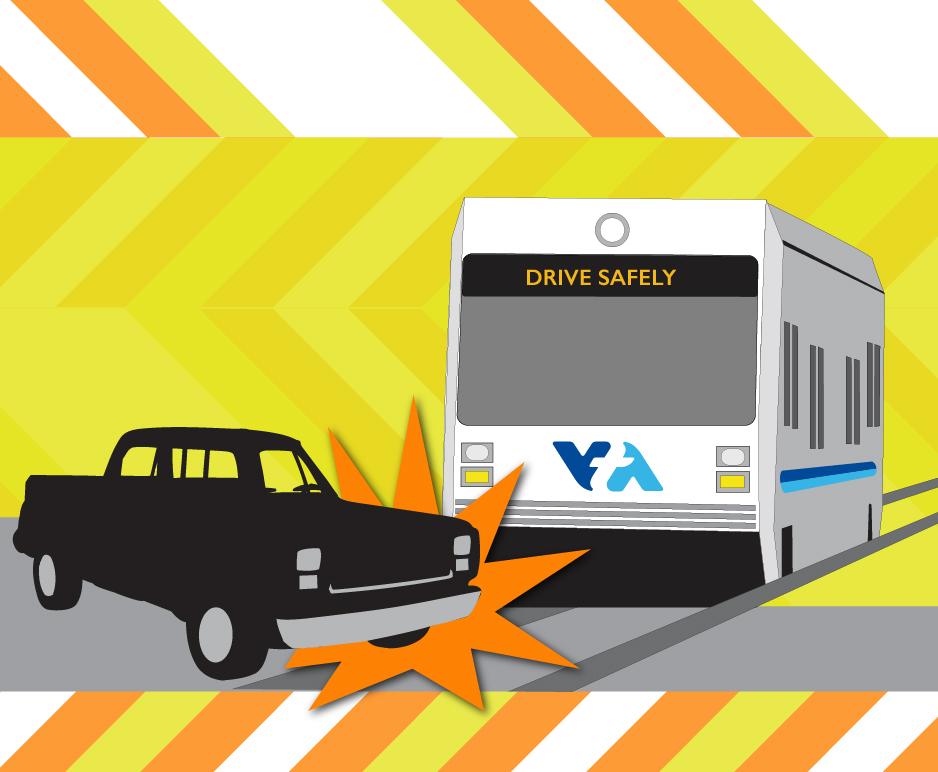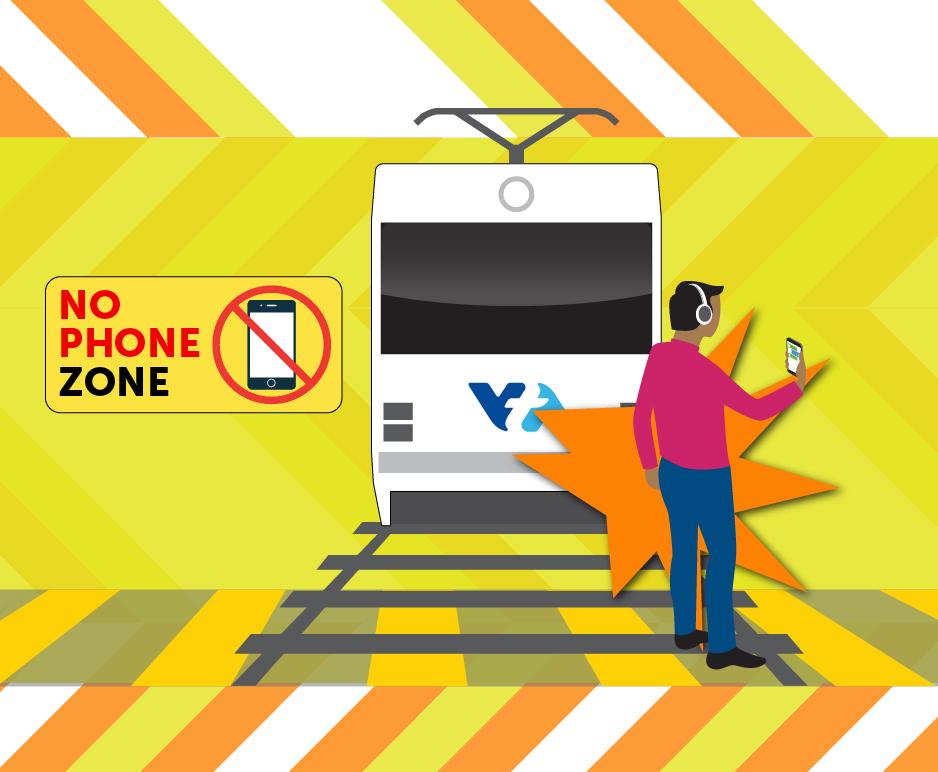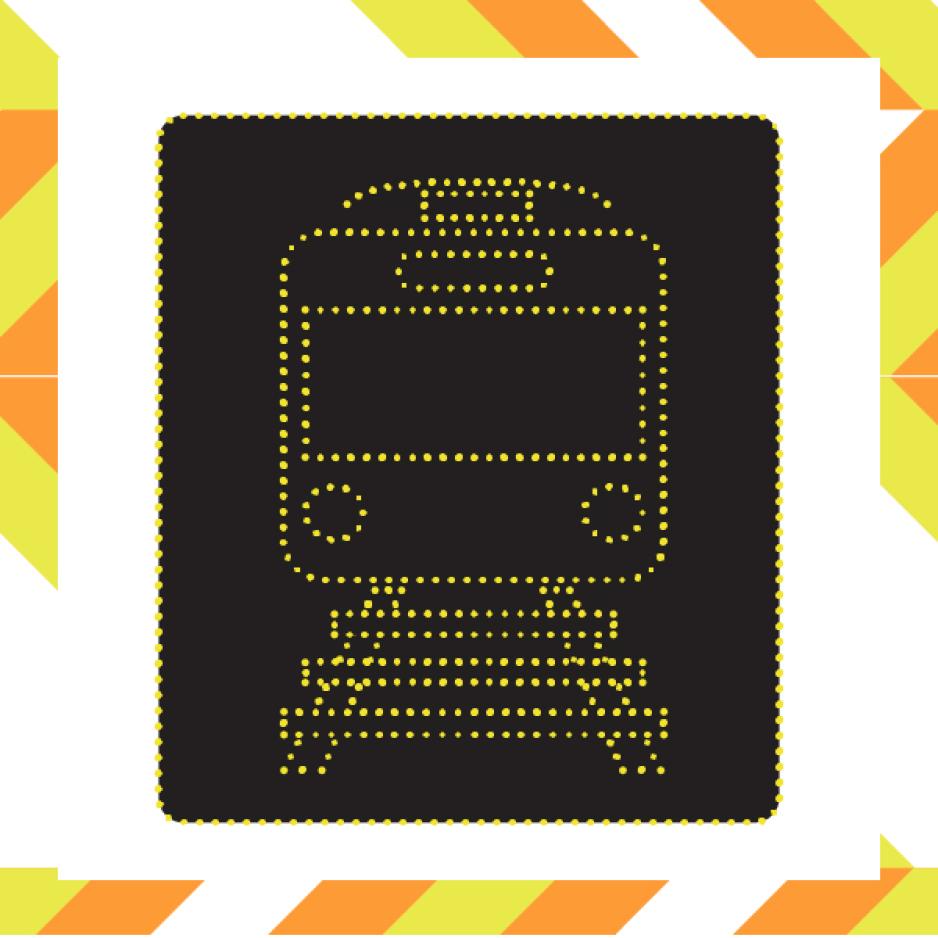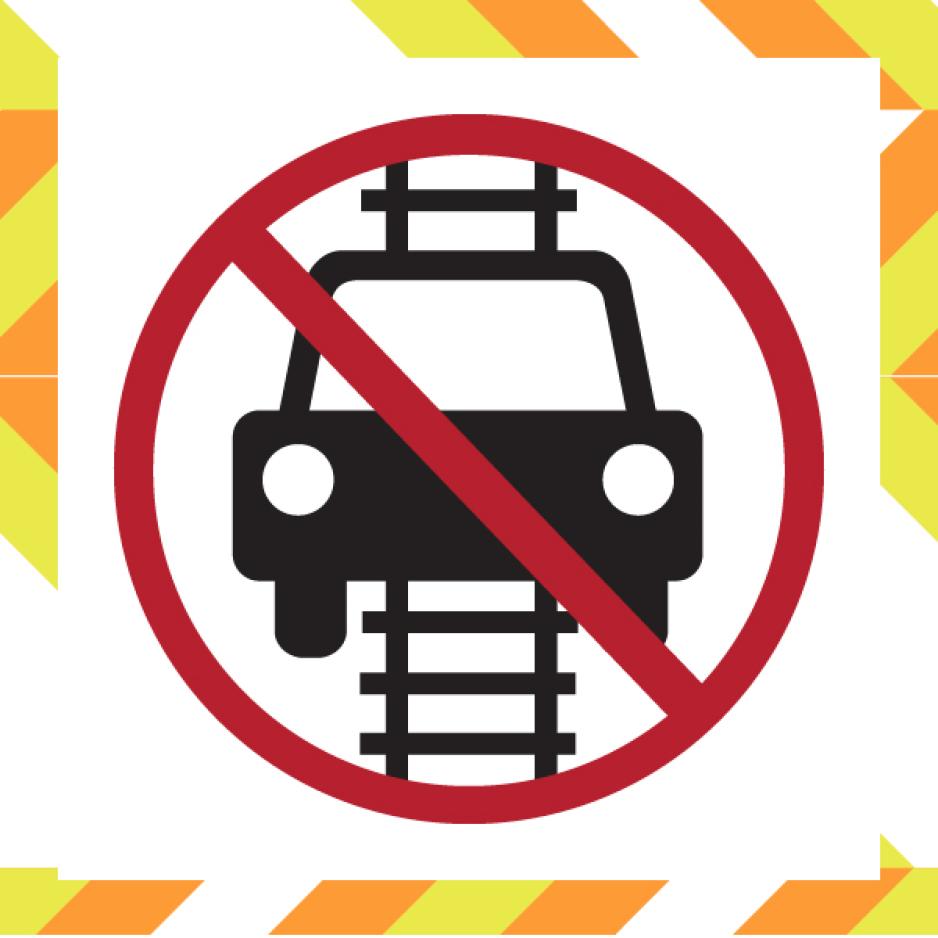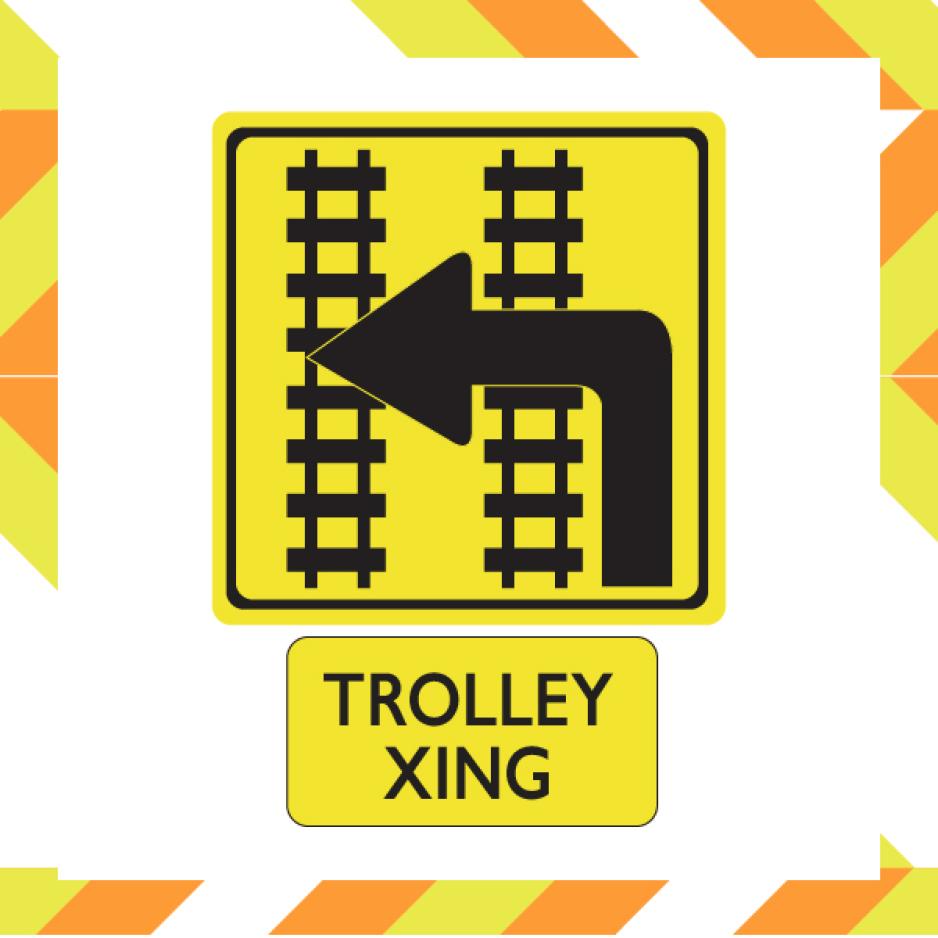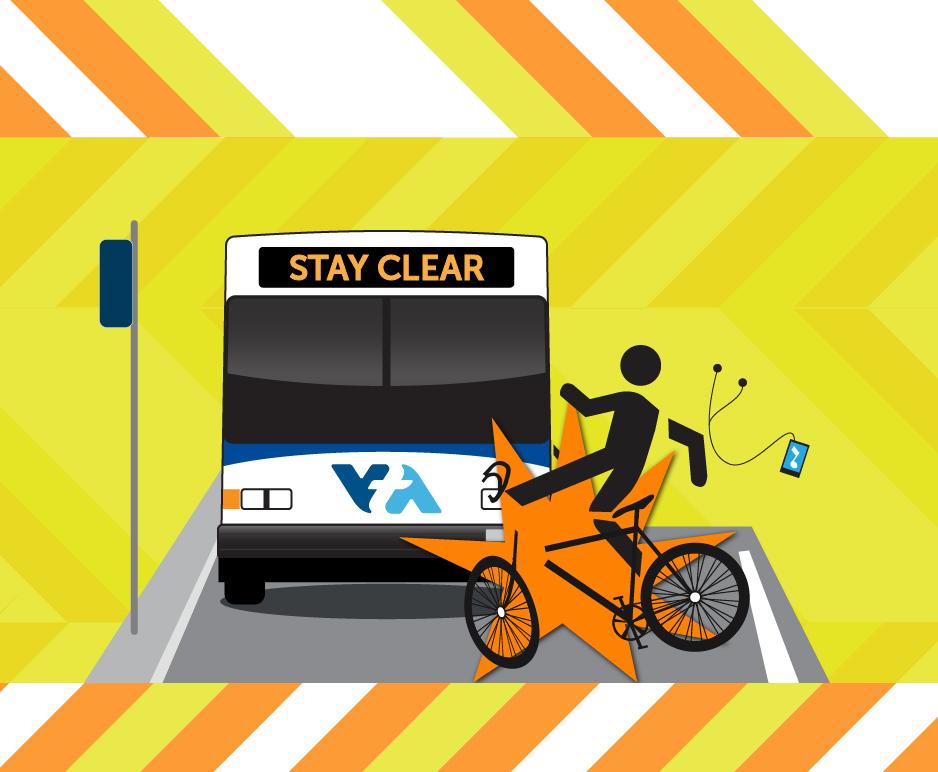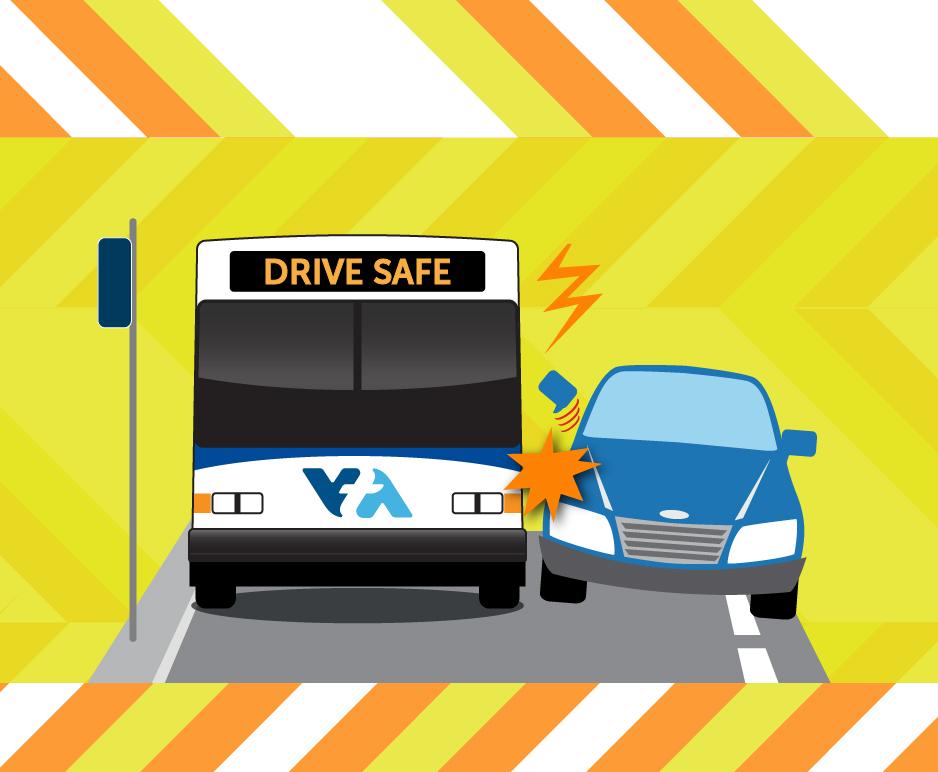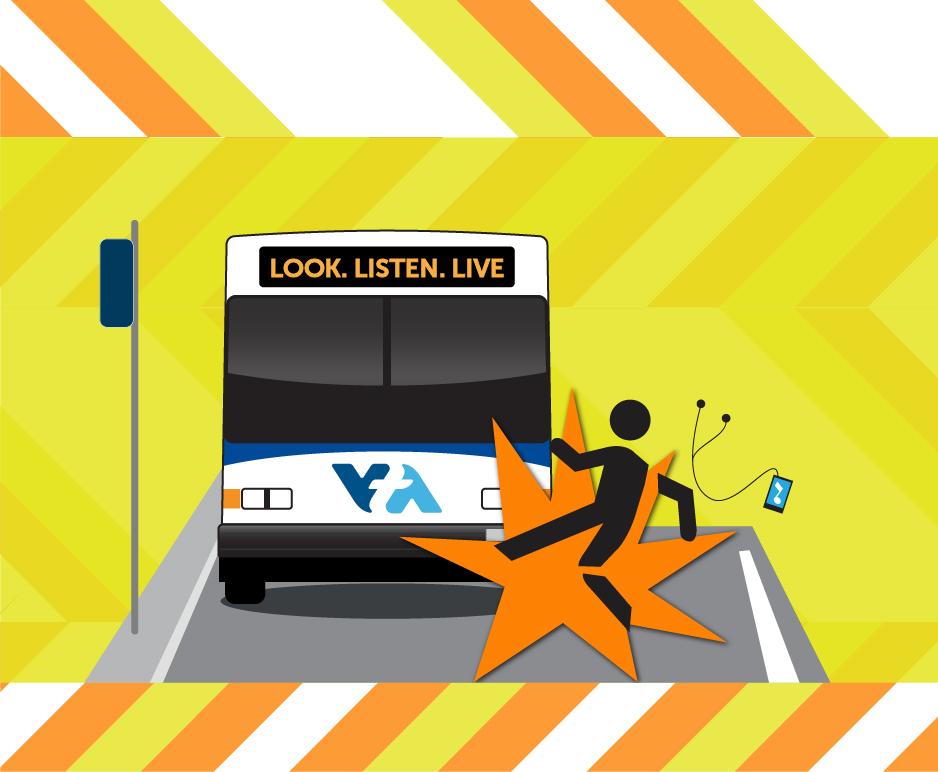Transit Security and Safety
VTA makes safety a top priority and continuously evaluates our system's processes, procedures, and features to improve safety and adapt to changing safety needs. This section of our website is dedicated to educating the public on some of the safety features and programs to help ensure we are operating safely and share information about what riders, pedestrians, and motorists can do to help ensure their safety.
VTAlerts
Download the free VTAlerts app to report safety concerns, suspicious activities and medical emergencies.
Safety Around The Tracks
VTA wants you to be safe when driving around our light rail system.
Each year, dozens of motor vehicles are involved in accidents or near misses with VTA light rail trains. In many cases, these incidents could have been avoided if the motor vehicle driver had followed these tips when driving near light-rail tracks in Santa Clara County.
Vehicle Safety
1. Cross tracks carefully.
Check for trains coming from all directions, including behind you.
2. Obey the warning device.
It's not safe to cross the tracks if audible warnings are sounding or crossing arms have lowered.
3. Do not drive on the tracks.
Driving onto light rail tracks is extremely dangerous. Even if no one is hurt, vehicles are often severely damaged and must be towed.
4. Watch traffic signals carefully.
Drivers in a left-hand turn lane need to be careful that the changing signal is for them and only proceed when they have a green arrow.
5. Watch for pedestrians.
Pedestrians are typically present in areas near light rail stations. Look out for jaywalkers.
FACT: You are 20 times more likely to die in a collision
with a train than in a crash involving another motor vehicle.
Things to Remember
• BE ALERT! Light rail trains are electric, very quiet, and move quickly. You may not hear them coming.
• Watch for the FLASHING TRAIN APPROACHING signs as trains are traveling in both directions. STOP! DO NOT CROSS THE TRACKS.
• NEVER RACE a light rail train across an intersection, even if it is a tie.
• NEVER TURN IN FRONT of an approaching light-rail train. Another train could be coming from behind you.
• BE ESPECIALLY ALERT in areas near light rail tracks. Nearby buildings and foliage can make it difficult for motorists to see trains.
• DO NOT drive across light rail tracks unless there is room on the other side to get completely across. If you don't fit, don't commit, and never stop on the light rail tracks.
• NEVER DRIVE AROUND LOWERED GATES; even if you do not see a light-rail train, it is illegal and dangerous.
• If, for any reason, your vehicle is stuck on the tracks, get out as soon as it is safe and call 911.
• LIGHT RAIL TRAINS CAN'T STOP QUICKLY. A light-rail train can take up to 600 feet to stop.
FACT: Nearly half of all automobile-rail crashes occur
when the train is traveling under 30 mph.
Pedestrian Safety
• Stop. Look. And listen for trains approaching from any direction.
• Look both ways before crossing the tracks.
• Avoid stepping on any rails.
• Remain at least 6 feet from the tracks when using cell phones.
• Violations could result in citations and/or injury.
What should you do?
• Obey all traffic signals.
• Always look both ways before crossing the tracks on foot, in a vehicle, or by bicycle.
• Be aware that light rail trains can travel in any direction, on any track, at any time, including turning into an intersection.
• Both ends of the light rail train look identical. White headlights indicate a light rail train coming towards you; red taillights mean it is moving away.
BE SMART: FOLLOW THE SIGNS
VTA provides informational traffic signs along its light rail system designed to keep you safe.
| Train Approaching | Do Not Enter |
| The "Train Approaching" sign warns you a train is approaching. Do not cross the tracks while it is flashing. | The "Do Not Enter" sign are seen where traffic lanes cross light rail tracks. Driving onto light-rail tracks is very dangerous. |
| No Vehicles on the Tracks | Trolley Crossing |
| The "No Vehicles on the Tracks" signs are also located where traffic lanes cross light-rail tracks. Do not stay in your vehicle if it becomes stuck on light-rail tracks. Exit immediately and call 911. | The "Trolley Crossing" sign is telling you to look for approaching light rail vehicles before crossing the tracks. |
Bus Safety
Don't put your life on the line! PHONE DOWN, HEAD UP NEAR TRANSIT. Don't text and drive.
Bicyclist Safety Around Buses
Important Bus Safety Tips for Bicyclists:
• Be aware of buses that frequently merge in and out of the lane closest to the curb. Swinging out too quickly to pass a bus on the left can result in a collision.
• Buses make wide turns; please give them space.
• Don't creep up on the right side of a bus making a turn.
• Don't assume the operator sees you. Operators will acknowledge bicyclists with a tap of their horn when they are a bus length back. If you can't see the operator in the bus's side view mirror, the operator can't see you either.
• Don't pass a bus on the right when it is at a bus stop, loading/unloading passengers.
• Don't step in front of the bus to load/unload your bike without first making eye contact with the bus operator. Make sure the bus is at a complete stop.
• Don't ride distracted.
Vehicle Safety Around Buses
VTA wants you to be safe when driving around our transit system.
• Buses are very, very big.
• Even VTA's smallest buses are 29 feet long, and the longest are 60 feet. Something that big deserves your full attention. Follow too close, and you risk being involved in a rear-end collision.
• Buses frequently merge in and out of the lane closest to the curb.
• Swinging out too quickly to pass a bus on the left can result in you sideswiping it.
• Buses make wide turns.
• Don't creep up on the right side of a bus. It's dangerous.
• Don't assume the operator sees you.
• If you cannot see the operators in the bus's side-view mirror, the operator cannot see you.
• Don't drive distracted.
Pedestrian Safety Around Buses
Important Bus Safety Tips for Pedestrians:
• Don't run across the street to catch your bus. Always look both ways before crossing.
• Arrive at your stop early and be patient if you miss your bus. Another will arrive shortly.
• If you're waiting for a bus, stay on the sidewalk. Don't step into the street.
• When exiting the bus, step onto the curb immediately.
• Use Transit app's real-time information to ensure that your ride is worry-free.
